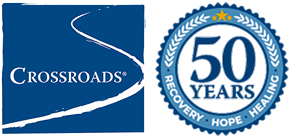Recovery from addiction is a process, and it can take several months or years for individuals to truly feel confident in their sobriety and ability to reduce risk of relapse. Many people think that once they complete treatment, they’ll be back to feeling like their old self before addiction set in. However, drugs and alcohol take a toll on the body and brain, and post-acute withdrawal syndrome can affect people months or years after treatment.
When you first begin treating your body from drugs or alcohol, you’ll go through acute withdrawal symptoms which subside within a few days. But as you progress in your recovery, you may notice that some symptoms seem to linger or pop up unexpectedly, and these may be post-acute withdrawal syndrome symptoms.
Knowing Your Enemy: PAWS
Post-acute withdrawal syndrome or PAWS occurs after the initial treatment period. The longer you have struggled with addiction and the heavier the substance misuse, typically the higher risk you are for experiencing more significant PAWS. These symptoms occur as the brain continues to recover and adjust to a substance-free lifestyle. Connections are rewired and the brain’s reward system adapts to natural stimuli.
It is important to remember that the time frame for PAWS varies from person to person, but symptoms can last up to a few years after addiction treatment, though usually they subside in frequency and severity over time. Individuals with co-occurring disorders may have trouble differentiating between what is mental health-related, and what is a symptom of post-acute withdrawal syndrome.
Lingering Signs
Post-acute withdrawal syndrome symptoms differ from those of acute withdrawal. They don’t involve nausea, vomiting, body aches, and other physical effects many people experience as drug or alcohol withdrawal symptoms. It is more psychological. Here are a few common symptoms to know:
- Mood swings: Transitioning from feeling happy, positive, and content, to sad, negative, and anxious unexpectedly or over seemingly minor situations. Individuals may be more irritable than usual.
- Depression: Feeling sad, hopeless, and helpless even if things are going well.
- Fatigue/lethargy: Having little to no energy, not being motivated to get up and be active or productive, and feeling tired even after getting enough sleep.
- Concentration/memory problems: Not being able to focus on doing the task at hand, or having trouble remembering information. Becoming easily distracted.
- Insomnia: Having difficulty falling or staying asleep. May wake up multiple times a night or be awake for long periods of time overnight. Approximately one-third of adults have insomnia with withdrawal.
- Anxiety: Feeling very worried, unsettled, or overly cautious. May experience panic attacks from time to time.
Post-acute withdrawal syndrome treatment helps individuals to identify these symptoms, reassures them that these experiences are a normal part of recovery, and helps with developing healthy coping strategies.
Suffering Through After-Effects
One of the major challenges with PAWS is that is can contribute to a high risk for relapse. If individuals are not prepared to experience or manage these symptoms, they may feel as though their recovery is failing or give in to temptation. PAWS can make them doubt the progress they have made, but really it is a sign of their brain healing and recovering from addiction.
Keeping the PAWS Off
Just like a person wouldn’t stop depression treatment as soon as they were feeling better, post-acute withdrawal syndrome treatment is the same way. It is something that is ongoing and changes as the person progresses. Coping strategies include activities such as:
- Maintaining active engagement in support groups and continuing to attend meetings. Talking through symptoms with a therapist or support group can be healing.
- Recognizing potential triggers and making changes to avoid them or adjust when they occur.
- Establishing consistent routines, especially when it comes to sleeping.
- Participating in regular physical activity to alleviate stress, increase energy, and promote the production of endorphins which are natural mood boosters.
- Focusing on the positives and realizing that the negative symptoms will pass in time. Not every day is all good, but not every day is all bad either.
- Continue following relapse-prevention strategies developed during and after addiction treatment.
- Reach out for help if PAWS symptoms feel overwhelming.
Though post-acute withdrawal syndrome is not an official diagnosis, it is a condition that many people in recovery experience. Symptoms can occur weeks, months, or even years later putting recovery in jeopardy if individuals do not have the right support systems and strategies in place. Crossroads supports clients along every step of the way from initial treatment to ongoing recovery and management of PAWS. Whether you are dealing with addiction recovery, an eating disorder, or co-occurring disorders, you do not have to go through this journey alone or feel that you have nowhere to turn – reach out to Crossroads today.
[cta]Are you struggling with your recovery or at risk of experiencing relapse? Reach out to Crossroads for quality treatment and support.[/cta]


















